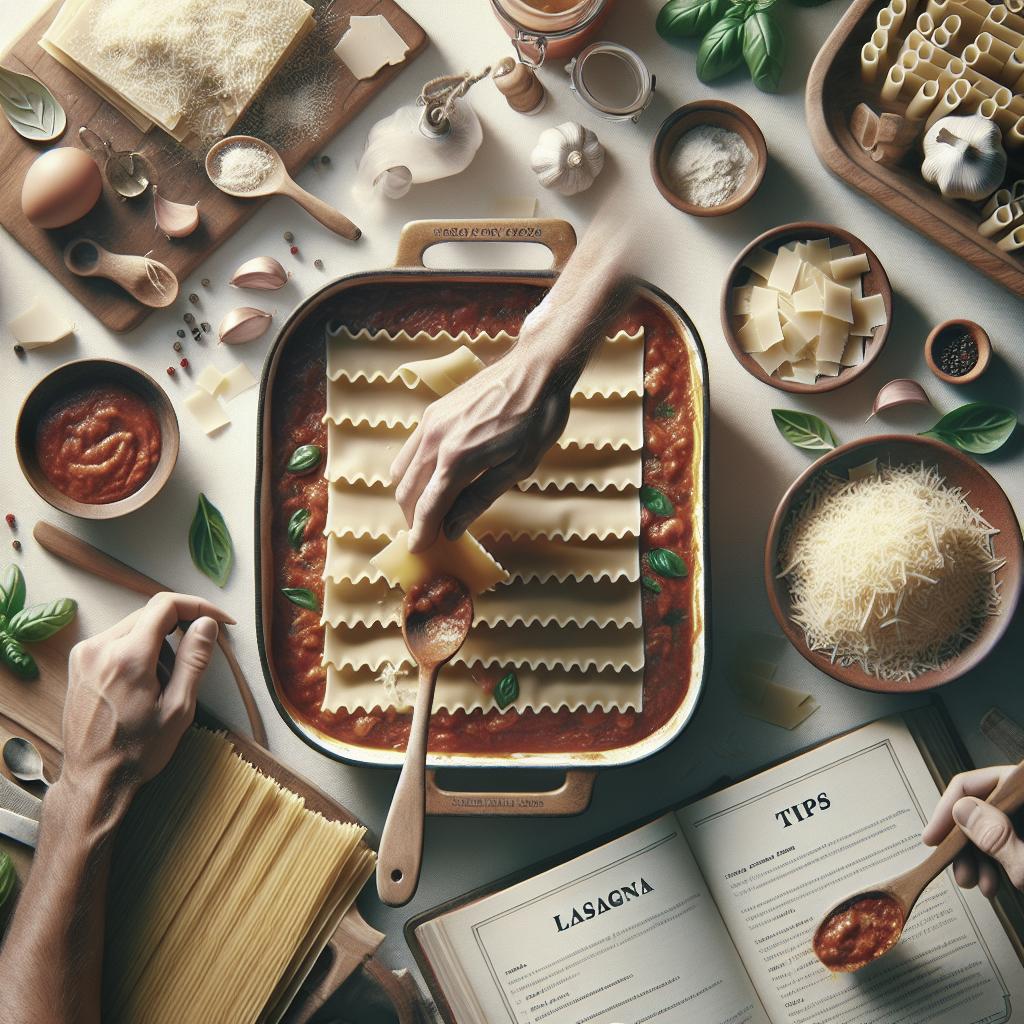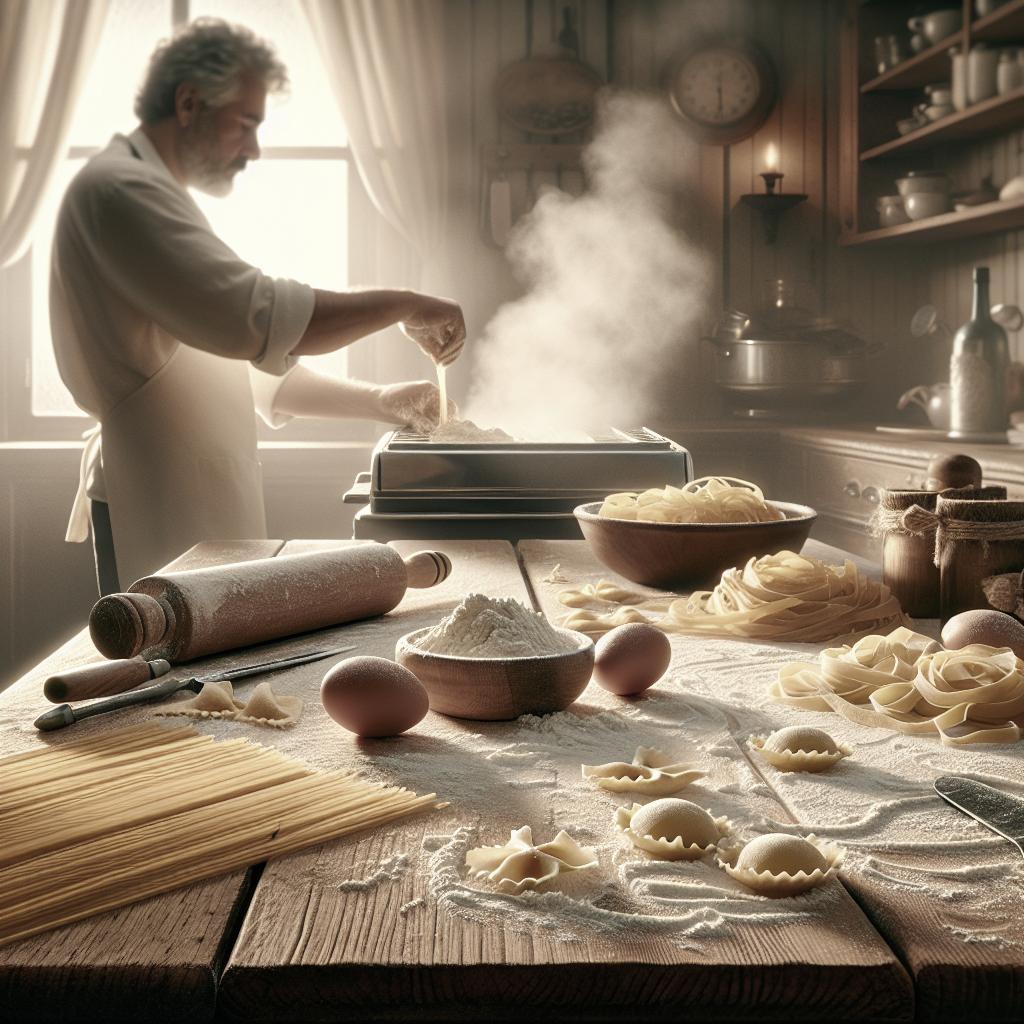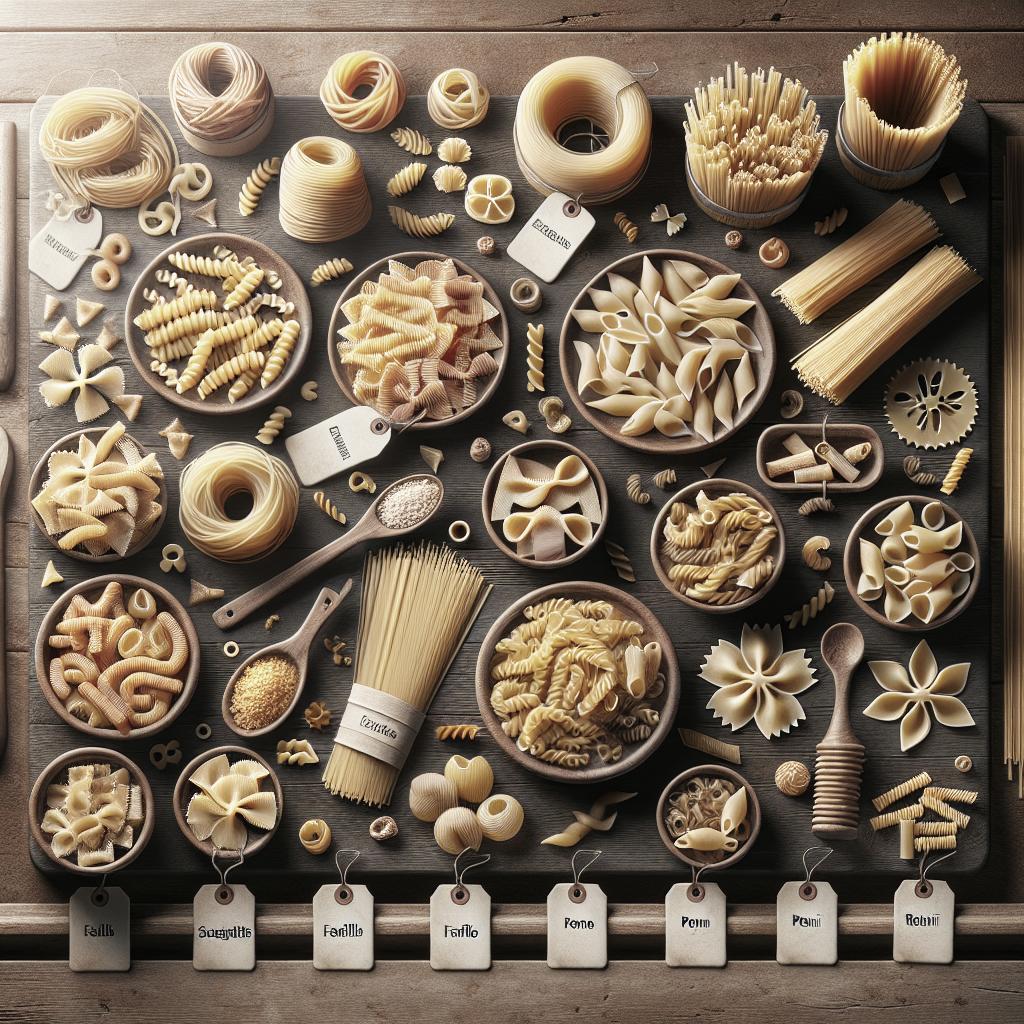“`html
How to Make the Best Lasagna
Lasagna is a classic comfort dish that combines layers of tender pasta, rich sauces, and gooey cheese into a hearty and satisfying meal. Making the perfect lasagna is about more than just following a recipe; it involves using the right ingredients, carefully constructing each layer, and achieving the ideal bake. In this post, we will explore essential tips for crafting a mouthwatering lasagna, from selecting the best components to adding new twists on this beloved dish. Whether you are a seasoned cook or a beginner in the kitchen, these insights will help you create a lasagna that stands out as a family favorite.
1. Start With the Right Ingredients
The foundation of any great lasagna starts with high-quality ingredients. Fresh pasta sheets can elevate the entire dish, offering a tender texture that is unmatched by their dried counterparts. Opt for premium tomato sauce or canned whole tomatoes, preferably San Marzano, known for their sweetness and low acidity, which can transform an ordinary sauce into something extraordinary.
Cheese is the star of lasagna, and using a mix of ricotta, mozzarella, and parmesan will provide depth in flavor and create that irresistible melt. When choosing ricotta, go for a whole milk version for creaminess. Fresh mozzarella can bring a luxurious moisture to your layers, while a good parmesan will lend a sharp, nutty note.
For a meatier version, select high-quality ground beef, pork, or combine both for a richer flavor. Adding a hint of Italian sausage can introduce additional spice and complexity. Vegetarians can opt for roasted vegetables, such as eggplant, zucchini, or mushrooms, providing a delicious and robust alternative to meats.
2. Assemble With Care
Assembling a lasagna is an art that requires careful attention. Begin with a layer of sauce as the base – this prevents the pasta from sticking to the pan. Next, add a sheet of pasta, followed by the ricotta mixture. Spread it evenly to promote a balanced taste in every bite. Sprinkle mozzarella and parmesan across the top to ensure the perfect cheesy texture.
Continue layering with meat or vegetables, alternating as you build upwards. Be generous with your sauce between each layer to maintain moisture during cooking, but be cautious not to overdo it; too much sauce can make the lasagna soggy. Remember the golden rule: lasagna should have a rich, structured form.
Top the final layer with sauce and cheese. Some recommend adding a touch of extra cheese or a sprinkle of herbs, like basil or oregano, for enhanced color and aroma when serving. Take your time during this stage to ensure a well-balanced and picturesque final product.
3. Cook and Rest
Baking the lasagna is where the magic happens. Preheat your oven to about 375°F (190°C) for optimal cooking. Cover the dish with aluminum foil for the first 30-40 minutes to avoid drying out while allowing the flavors to meld and penetrate through the layers.
Once the lasagna has baked sufficiently under foil, remove the cover and let it bake for another 15 minutes. This crucial step allows the cheese topping to achieve a golden, bubbly crust, which is both visually appealing and deliciously tempting.
After removing the lasagna from the oven, let it rest for at least 15 minutes before serving. This resting period is crucial as it helps the flavors settle, and allows the layers to firm up gently, which results in cleaner slices with well-defined components.
4. Know Where to Draw the Line
Lasagna can be as simple or as elaborate as you wish, but it’s essential to recognize when more becomes too much. While creativity is encouraged, adding too many ingredients can overwhelm the essence of traditional lasagna. Stick to a reasonable number of layers to avoid a dominance of one ingredient over others.
The sauce should be flavorful but not overpowering, complementing rather than masking the other components. Strike a harmony between richness and freshness, with enough acidity from tomatoes to cut through the cheese’s creaminess without drowning its taste. Balance is key in achieving a pleasant dish that everyone can enjoy.
It is easy to over-spice or over-salt when you’re excited by creativity. Keep spices light, using them to accentuate, not dictate the taste. Lasagna should be a melody of flavors, with each element playing a role in the final performance.
5. Start With a Great Recipe
A well-tested recipe is your best friend when aiming to make an exceptional lasagna. Browse reputable cookbooks, food blogs, or cooking shows for classic recipes that have stood the test of time. These recipes often come with detailed instructions and yield excellent results, thanks to their proven methodologies.
Consider using a recipe as a basic framework and then expend it with your own personal touches. Whether it’s personalizing the spice mix, the type of meat, or incorporating alternative layers like pesto or bechamel, these modifications can result in a unique dish while maintaining the core aspects of what makes a great lasagna.
Take notes on what works and what doesn’t each time you make lasagna to refine your technique and create your signature lasagna recipe. Building upon a foundation of solid recipes allows for culinary creativity while ensuring a satisfying result.
New Twists on Lasagna
Innovation belongs in the kitchen, and lasagna is no exception. While the traditional recipe is beloved, new spins on the classic can provide delightful variations that bring fresh life to the table. Incorporating ingredients like spinach or kale can add a nutritional boost and vibrant green color, complementing the dish beautifully.
For a modern twist, replace pasta sheets with zucchini or eggplant slices to suit low-carb or gluten-free diets without compromising texture or flavor. Seafood lasagna can lend an unexpected luxurious quality by integrating shrimp, crab, or lobster along with a bechamel sauce.
Lasagna rolls offer a fun, individualized twist perfect for serving guests at a party. Each roll can be stuffed with different fillings like pesto or ricotta and spinach, providing a diverse tasting experience at the dinner table. These creative concepts allow lasagna to evolve while honoring its comforting roots.
Future Prospects
| Step | Key Points |
|---|---|
| Start With the Right Ingredients | Select fresh pasta, quality cheese, and complementary meats or veggies. |
| Assemble With Care | Build layers thoughtfully, ensuring balance in flavors and textures. |
| Cook and Rest | Bake covered, uncover to brown, and let rest before serving. |
| Know Where to Draw the Line | Avoid overwhelming flavors; maintain clarity and balance. |
| Start With a Great Recipe | Base your lasagna on a trusted recipe, adapting where desired. |
| New Twists on Lasagna | Experiment with unique ingredients and creative presentation for variety. |
“`


